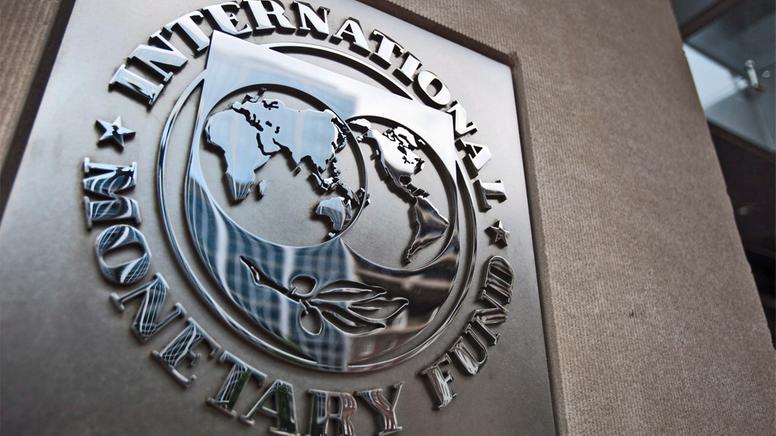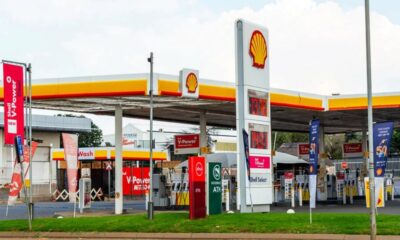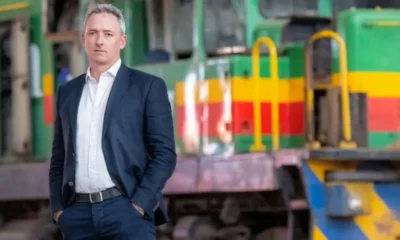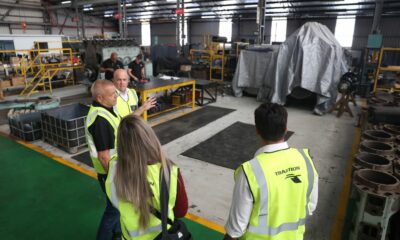Business
SA’s Stalled Engine: IMF Sees No Acceleration in Growth

As neighbours surge ahead, South Africa’s sluggish reforms leave it in economic limbo
South Africa’s economy is showing little sign of life, and the world is watching.
This week, the International Monetary Fund (IMF) published its latest World Economic Outlook, holding South Africa’s 2025 growth forecast at a paltry 1% and nudging it only slightly higher to 1.3% in 2026. The numbers are grim, especially when compared to the more upbeat outlook for the broader Sub-Saharan Africa region, where growth is expected to jump to 4% next year and 4.3% in 2026.
For many South Africans, the numbers are more than just percentages, they reflect a daily reality of economic frustration, persistent unemployment, and uncertainty about the country’s future direction.
So, what’s holding SA back?
According to the IMF, the answer lies in slow-moving structural reforms, especially in energy and logistics—two areas where South Africa’s economy continues to bleed potential.
Although energy generation has improved, electricity transmission and distribution remain unreliable, frequently stalling production in key industries. Simultaneously, Transnet’s underperformance, from broken rail networks to congested ports, continues to throttle trade and investor confidence.
Sanisha Packirisamy, chief economist at Momentum Investments, summed up the mood: “While our regional peers are seizing reform-driven growth opportunities, we are still struggling with our long-standing inefficiencies.”
Her view was echoed by Investec’s Annabel Bishop, who said their own forecast also sat at a modest 0.9% for 2025. “Progress at Transnet remains far too slow. The domestic freight crisis isn’t just a logistics issue, it has become a macroeconomic drag,” she said.
Bishop added that real growth, in the ballpark of 3%, remains out of reach until the end of the decade unless South Africa radically boosts its freight and energy capacities.
A Regional Wake-Up Call
The numbers from our neighbours are a slap in the face. While South Africa wallows in sub-2% projections, countries across Sub-Saharan Africa are charging ahead, buoyed by commodity exports, demographic momentum, and reform-minded governments.
Why is South Africa falling behind? The IMF points to the lack of urgency. Other economies are pouring resources into infrastructure, overhauling state-owned enterprises, and improving regional trade integration. South Africa, in contrast, seems stuck, constrained by politics, bureaucratic delays, and fiscal limitations.
According to Deniz Igan from the IMF’s Research Department, broader reform is the only path forward. “Institutional reform, investment in transportation, and fixing state-run enterprises, especially in energy are critical,” she warned.
Behind the Numbers: A Public Losing Faith
On the ground, public sentiment is souring. On social media, hashtags like #FixTransnet and #LoadSheddingKillsJobs trend frequently, reflecting growing frustration. Small business owners vent about missed shipments and costly generator bills. Young South Africans scroll through job listings that never change.
“I’m tired of hearing about potential,” wrote one Twitter user. “We need performance.”
It’s not just everyday South Africans who are worried. Investors, rating agencies, and global development institutions are increasingly wary of the disconnect between the country’s ambitions and its actions.
Treasury and Reserve Bank More Optimistic, But Are They Right?
Not everyone is quite as gloomy as the IMF. South Africa’s own National Treasury and the South African Reserve Bank (SARB) predict slightly higher growth: 1.4% to 1.6% in 2025 and up to 1.8% by 2027.
But as economic headwinds intensify, ranging from US tariffs to sluggish global growth even those projections may prove too optimistic without urgent reform.
The Bottom Line
South Africa isn’t doomed, but it is stuck. And the longer it delays action on electricity reliability, logistics reform, and state-owned enterprise restructuring, the harder it becomes to close the gap with its faster-growing neighbours.
Right now, the country’s economy is idling when it should be racing.
The good news? The roadmap to recovery is clear. What’s needed now is the political will and public pressure to drive it.
{Source: IOL}
Follow Joburg ETC on Facebook, Twitter , TikTok and Instagram
For more News in Johannesburg, visit joburgetc.com


























